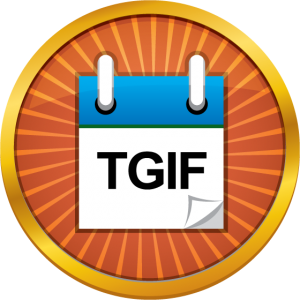31 Dec 2011
 As 2011 comes to a close, let’s take a look back at this year’s most popular posts as determined by overall traffic. Starting this blog back in May was the realization of a personal goal for me. I appreciate your participation and support and thank you for reading this year!
As 2011 comes to a close, let’s take a look back at this year’s most popular posts as determined by overall traffic. Starting this blog back in May was the realization of a personal goal for me. I appreciate your participation and support and thank you for reading this year!
The Top 5 Posts of 2011
- The Leadership Equation: Characteristics of a Good Leader
- The Leadership Equation: Truthfulness and Integrity
- The Leadership Equation: Faithfulness, Humility, and Servanthood
- The Best Week Ever: The Practice of Personal Productivity
- How to Feed Twitter with Your Shared Google Reader Items
Let me know your thoughts: What was your favorite post? What topics would like to see covered in 2012?
In
Leadership,
Productivity,
Social media,
Technology
(characteristics of a good leader,
google reader,
have a good week,
Leadership,
productivity,
top posts of 2011)
09 Dec 2011
Thank goodness it is Friday. Over the last two weeks I have missed a number of outcomes, have a below average velocity, and added more tasks to my backlog than I have removed. Is it time to give up?

Absolutely not. It is time to review why.
What is the Weekly Review?
At the end of my week, I spend roughly twenty to thirty minutes reviewing my week. During the weekly review, I view my dashboard to remember what went well, what needs improvement, and determine what I am going to do differently next week. As time permits, I look for opportunities to save missed outcomes by taking steps to correct what went wrong and get set for success next week.
As described in the overview, I follow these steps:
The Weekly Review
- Review lessons learned from daily tasks and weekly outcomes – I make sure I have captured lessons learned from any uncompleted tasks or outcomes and look for trends across weeks.
- Analyze metrics – Since I am capturing my backlog, daily tasks and status, weekly outcomes and status in a spreadsheet, I am automatically capturing metrics through a set of pivot tables to help me understand how I am doing. For example, I capture my backlog management index, my weekly outcome % complete (this week, last week, total), my daily task % complete (this week, last week, total), my velocity (# outcomes per week or tasks per day), unplanned work, and my power days.
- Capture what went went well for week – I find it important to remember what went well so I can repeat it next week.
- Capture what needs to improve for week – I seek to improve in my ability to complete items as well as make any process tweaks to increase my capacity / eliminate waste.
- Review backlog – I review my backlog, mark completed items, and remove items no longer relevant.
Why the Weekly Review works
- Measurement – I imagine that tracking lessons learned, dates, and completed tasks seem like overkill for many. However, keeping accurate data and analyzing the data is key to gain new insight and is the basis for meaningful change.
- Continual Improvement – The weekly review enables continual improvement. By reviewing your week and missed outcomes, you can seek to eliminate wasted time and energy. In addition, you can make adjustments so that further deviation from your goals does not occur.
- Meeting Expectations – During the weekly review, you can better understand your capacity and productivity for a given week. This insight will enable you to set better expectations for others.
- Responsibility – The weekly review will help you acknowledge and accept the choices/actions you have made throughout the week as well as the corresponding results – the basis of taking responsibility. When I have a “bad” week, taking responsibility enables me to move from helplessness to empowerment. Remember to avoid blaming others in your lessons learned and word them in a manner that recognizes your part in the missed outcome/tasks.
Question for you: Is the weekly review too frequent to have meaning for you?
In
Productivity
(continual improvement,
Lean,
productivity,
retrospective,
scrum,
TGIF,
weekly review)
12 Nov 2011
 Back in September, Mark Deaton, a reader of this blog, quoted Jim Rohn, a well known businessman and speaker. Jim stated that you should “never begin the day until it is finished on paper.” These fine gentleman are pointing out the importance of planning your day.
Back in September, Mark Deaton, a reader of this blog, quoted Jim Rohn, a well known businessman and speaker. Jim stated that you should “never begin the day until it is finished on paper.” These fine gentleman are pointing out the importance of planning your day.
In the last post, we talked about the importance of starting your week right. In this post, we will discuss the importance of starting you day right with the daily planning session.
What is the Daily Planning Session?
Each morning I spend roughly thirty minutes preparing for my day. During the daily planning session, I review my weekly outcomes and then determine the tasks that I want to accomplish during the day. As described in the overview, I follow these steps:
- Empty inbox and create action items – My inbox contains all the stuff in my life I need to remember or take action on. If I think of something, I send myself an email. Each morning I process my inbox using the “delete, delegate, defer, and do” methodology. I avoid trying to read an email more than once. In some cases, I don’t read emails due to inbox rules I have created to automatically remove and file messages.
- Record yesterday’s results – Capture whether or not I completed yesterday’s daily tasks and record any lessons learned if I did not complete a task.
- Review weekly outcomes – I review my weekly outcomes and mark off any completed outcomes.
- Review previous day lessons learned – Since I will likely carryover uncompleted tasks from the day before, I review yesterday’s lessons learned.
- Set daily tasks (3-5 items) – I determine what is the next action in achieving one or more of the remaining outcomes and block time to accomplish those tasks for that day.
Why these steps work
- By cleaning your inbox in a batch, you can avoid disruption during the day (productivity killer).
- By reviewing your weekly outcomes, you can ensure your effort for the day is aligned with your weekly outcomes and you are making progress towards those outcomes.
- By setting your daily tasks, you can avoid the “tyranny of the urgent” and keep focused during your day. In addition, setting your tasks gives you the opportunity to set realistic goals.
- By setting your daily tasks, you also create accountability for yourself. Personally, I find that I push to complete my tasks before I go home.
- By capturing and reviewing your lessons learned from yesterday, you avoid making the same mistake twice.
Questions for you: Do you run the day or does the day run you? Why or why not?
In
Productivity
(daily,
Getting Things Done,
Jim Rohn,
outcome,
planning,
Time management,
Week)
29 Oct 2011
When sprinting, the importance of a good start cannot be overstated. The sprinter who has the best start usually wins. If your week is like a sprint, you would want to ensure you have a great start to the week. In this post, we will apply the tools we reviewed in the last post to the Weekly Planning Session.

What is the Weekly Planning Session?
Each monday morning I spend roughly an hour preparing for my week. During the weekly planning session, I choose my highest priority items and determine what outcomes I would like to see for the week. This session gives me that great start and will make a difference in how I run the race. As described in the overview, I follow these steps:
- Empty inbox and create action items – My inbox contains all the stuff in my life I need to remember or take action on. If I think of something, I send myself an email. Each morning I process my inbox using the “delete, delegate, defer, and do” methodology. I avoid trying to read an email more than once. In some cases, I don’t read emails due to inbox rules I have created to automatically remove and file messages.
- Review lessons learned – I review last week’s lessons learned from uncompleted outcomes and tasks and seek to improve in those areas.
- Review and update backlog – A backlog is a prioritized list of things that need to be done. The backlog is in rank order. I move any action items created from my inbox into a backlog that I keep.
- Review calendar for key events over next 3 weeks – I scan my calendar for important meetings over the next few weeks and look for tasks I sent to my “future” self. The purpose is to re-prioritize backlog items that are time sensitive as well as determine how much time I have to complete my weekly outcomes.
- Set weekly outcomes (3-5 items) – Instead of just grabbing an item off my backlog, I use outcome visioning – viewing what wild success would look like if I completed that backlog item. David Allen, the GTD guru, states that you won’t see how to do it until you see yourself doing it, and his advice is to view the project from beyond the completion date.
- Set daily tasks for Monday (3-5 items) – I determine what is the next action in achieving one or more of the weekly outcomes and set goals to accomplish those tasks for that day.
- Block calendar – I block off time on my calendar for the day and week to reserve adequate capacity to complete my daily tasks.
Why These Steps Work
- By cleaning your inbox all at once (batching), you can avoid disruption during the day (productivity killer).
- By prioritizing your backlog and selecting the top items, you will focus on the highest priority items and become effective in your job (not just efficient).
- By setting weekly outcomes, you can identify the steps needed during the week by working backwards with the outcome in mind. In addition, your outcomes will help you decide what to do and what not to do during the week.
- By setting just a handful of weekly outcomes, you reduce anxiety (another productivity killer) by not focusing on a large list of tasks. Your list becomes achievable.
- By reviewing your lessons learned, you can avoid making the same mistakes you made last week.
- By blocking time on your calendar, you schedule your work and keep other people’s emergencies from sucking your time. In addition, you can schedule certain items based on your energy level.
Question for you: Do you plan your week? If so, what steps do you take?
In
Productivity
(inbox,
outcome visioning,
outcomes,
planning,
productivity,
scrum,
sprint,
start)
22 Oct 2011
On October 22nd, I presented two sessions at BarCamp Charleston and had a great time. The first session was an “Introduction to node.js and socket.io.” The second session was on “Personal Productivity: Using Agile and Lean to Get Stuff Done.” I have uploaded my personal productivity slides here. Enjoy!
Productivity Session at BarCamp
In
Productivity
(Agile,
barcamp,
barcampchs,
Lean,
node.js,
productivity)
 As 2011 comes to a close, let’s take a look back at this year’s most popular posts as determined by overall traffic. Starting this blog back in May was the realization of a personal goal for me. I appreciate your participation and support and thank you for reading this year!
As 2011 comes to a close, let’s take a look back at this year’s most popular posts as determined by overall traffic. Starting this blog back in May was the realization of a personal goal for me. I appreciate your participation and support and thank you for reading this year!
 Back in September, Mark Deaton, a reader of this blog,
Back in September, Mark Deaton, a reader of this blog, 